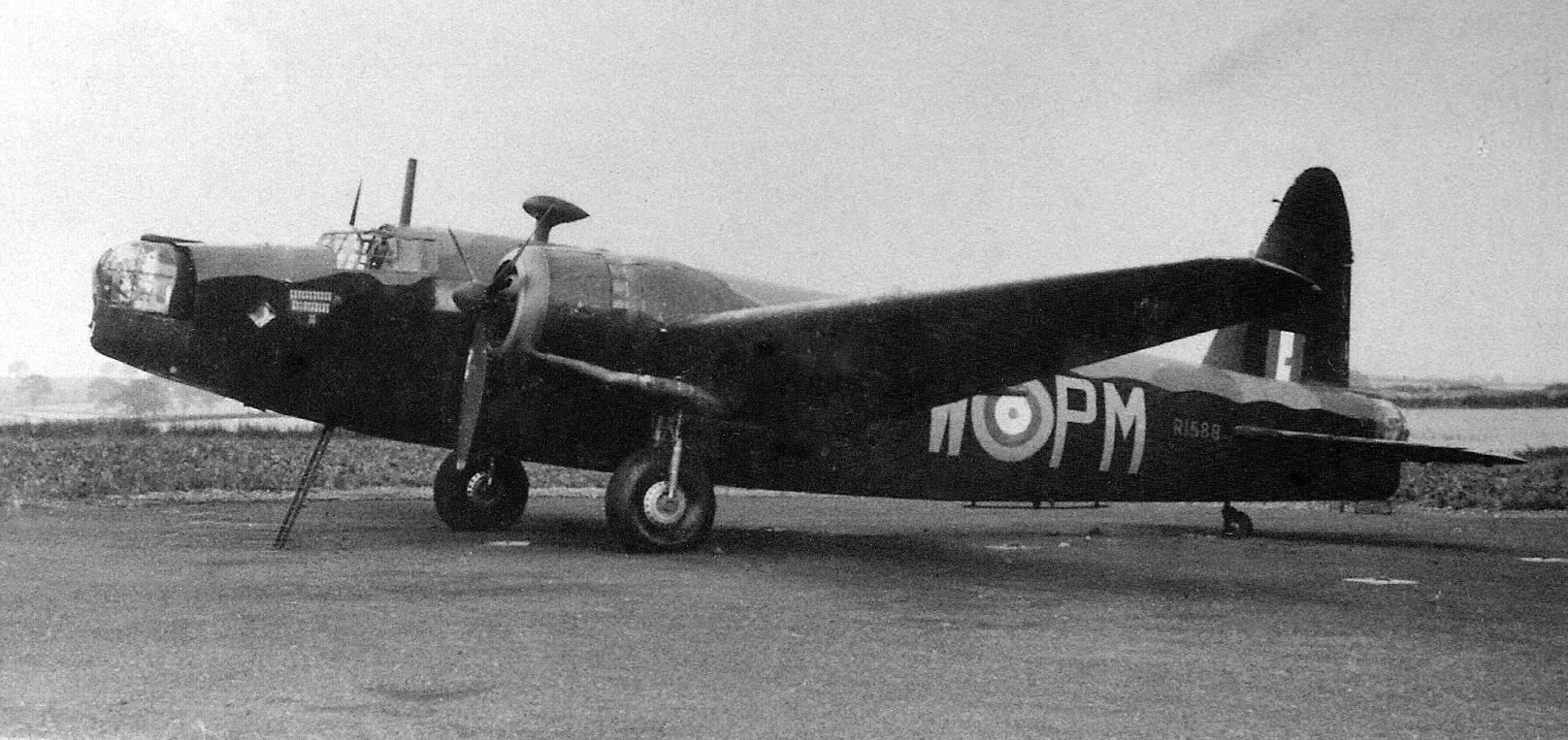A Brief History of 103 Squadron

The Squadron was formed during the First World War at Beaulieu in Hampshire under the command of Major T Maxwell-Scott, flying DH9 single-engined biplanes (right).
In May 1918, 103 transferred to France and for the rest of the war flew reconnaissance and day bombing operations on the Western Front. The Squadron was disbanded after the war in March 1919.
With increasingly uncertain political climate in Europe in the mid-thirties, 103 Squadron reformed in 1936 at Andover in Hampshire, as part of the expansion of the RAF, under the command of
Squadron Leader D H Carey. The Squadron was initially equipped with Hawker Hind single-engined biplanes. After a move to Usworth in the North of England, the Squadron was re-equipped in 1937
with more modern single-engined Fairey Battle monoplane bombers.
At the outbreak of Second World War, 103 Squadron flew to northern France as part of the Advanced Air Strike Force. The winter of 1939/ 40
was relatively quiet, but this was
about to change. On 10 May 1940 the German forces commenced an all-out attack on France, Belgium and Holland. The Squadron flew into action immediately in a series of desperate attacks against
a far stronger, more experienced and better equipped enemy, to suffer very heavy losses. As the situation worsened and France was near to collapse, the remains of the squadron was withdrawn and
returned to Abingdon in England in June 1940.

The following month, the Squadron transferred to Newton, near Nottingham, under the control of 1 Group Bomber Command. In October 1940, 103 was equipped with the capable Vickers Wellington twin-engined bomber (left).
Operations started with the new aircraft in December that year and for the next 3 months many night raids were flown to targets in Germany and occupied Europe. In the spring and summer of 1941 much of the Squadron effort was concentrated on the U-Boat bases along the coast of France and German capital ships in Brest.
In July 1941 the Squadron moved to its new base at Elsham Wolds in North Lincolnshire – around 5 miles (8km) south of the Humber
estuary. German targets were raided again in force throughout the winter of 1941/42 and in May 1942 the Squadron participated in the series of “Thousand Bomber Raids”.
That summer the Squadron was re-equipped with the four-engined Handley Page Halifax and a Conversion Flight was formed to train crews in use of the heavy bomber. To accommodate this,
July 1942 saw only a single operation and attacks on enemy targets progressively resumed in the August. However, losses with the new aircraft were heavy and a few months later it was replaced by
the Avro Lancaster (below). Halifax operations ceased at the end of that October and early November 1942 saw another period of intensive training commence.

Raids were resumed on targets mainly in Germany, with some to Italy in late November 1942. At the beginning of March 1943 the Squadron flew the first of many raids
in the ‘Battle of The Ruhr’. These were followed in August 1943 by the first of a series of raids on the German capital, referred to as the ‘Battle of Berlin’, which continued through the winter of
1943/44. Many major industrial cities in Germany were also raided around this time and losses throughout were high.
In November 1943, ‘C’ Flight of 103 was transferred to form the nucleus of the new 576 Squadron: initially to be based at Elsham Wolds. In April 1944 the
Squadron’s efforts were concentrated in bombing railway communications and military installations in preparation for the ‘D-Day’ landings on 6 June 1944.
Throughout the summer of 1944 most of the operations flown were in direct support of the land forces or against German ‘V’ rocket sites and oil/ fuel production
or storage facilities. Many of the operations were now flown in daylight. Throughout the winter of 1944/ 45 a series of very heavy attacks were mounted against targets all over Germany. Again
many of these were in direct support of the land forces but also against industrial targets or synthetic oil/ fuel manufacturing centres. Towards the end of the war the Squadron became involved
in the dropping of food supplies to relieve civilian starvation in the Netherlands (Operation Manna), also flying liberated prisoners of war and returning troops from Italy back to Britain.
It was disbanded on 25 November 1945, with remaining personnel joining those of 100 Squadron to re-form 57 Squadron. A few days later,
the new Squadron became based at RAF Scampton.
During World War II the Squadron had performed with great distinction and resolution in the face of very heavy losses of aircraft and crews throughout the campaign. Whilst with 1 Group,
103 participated in 486 bombing operations and 33 mine laying operations. 5,840 sorties were flown for the loss of 179 aircraft. In addition 22 aircraft were destroyed by crashes in Britain.
The details of the Squadron’s time with the Advanced Air Strike Force in France are unclear, but at least 26 aircraft were probably lost.
The Squadron reformed on 30 November 1954 as part of the 2nd Tactical Air Force, equipped with Canberras, and based in at Gutersloh, West Germany. It was disbanded again on 1 August 1956,
only to reform exactly three years later, when No 284 Squadron was renumbered. 103 became based at Nicosia in Cyprus, flying Sycamore HR.14 helicopters operating in a search and rescue,
casualty evacuation and internal security role.
After being disbanded yet again on 31 July 1963, the Squadron immediately reformed in the Far East at Seletar, flying the Whirlwind Mk 10 helicopter.
In 1969 it was redeployed to Changi and then moved to Tengah in 1971. The Whirlwind was replaced with the Wessex helicopter in 1972 and the 103 Squadron was disbanded for the last time on 1 August 1975.
